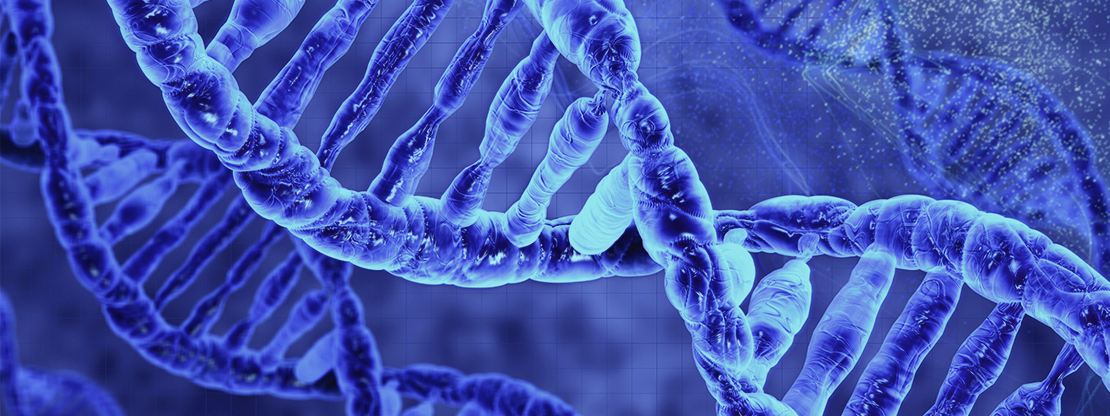Maternal age, diet at conception may impact epigenetic marks associated with childhood body mass index
December 2, 2018

GRAND RAPIDS, Mich. (Dec. 3, 2018) — The age and diet of women when they conceive influences a specific type of epigenetic regulation that may be related to body mass index, according to findings published today in Proceedings of the National Academy of Sciences.
Every cell in the human body contains about 20,000 genes, which encompass the instructions for life. Less than 1 percent of these genes are “imprinted,” meaning that, unlike the majority of genes, they retain important chemical tags applied by either the mother or the father before conception. The result is an “epigenetic memory” through which non-genetic information, such as maternal age and diet, may flow directly from parent to offspring.
The study comprised analysis of new and several previously published datasets to parse changes in the way the nc886 gene is epigenetically tagged, or “imprinted,” before being passed on from mother to child.
“Imprinting is generally considered to ‘all or nothing’, meaning that the 100 or so known genes that undergo this process are usually totally imprinted or they’re not,” said Peter A. Jones, Ph.D., D.Sc. (hon), chief scientific officer of Van Andel Research Institute (VARI) and the study’s senior author. “Given this, it is incredibly interesting that nc886 appears to exhibit variations in imprinting that are linked to the age and diet of mothers.”
To do this, Jones and colleagues analyzed four previously published datasets developed by scientists at other institutions, which encompassed epigenetic information from more than 3,500 people in several countries. They found:
- Children in The Gambia who were conceived during the dry season, when maternal diet is calorically richer but nutritionally poorer than other times of year, were less likely to have imprinting on nc886.
- Children in Norway who were conceived by women younger than 20 years of age were less likely to have imprinting on
- Children in Australia who do not have imprinting on nc886 were more likely to have a higher body mass index at their fifth birthday than children with imprinting on the gene.
Taken together, the findings suggest that maternal imprinting on nc886 may influence body mass index of offspring. Specifically, it implies that mothers younger than 20 or who have calorically richer but nutritionally poorer diets are more likely to give birth to children who may be overweight later in life.
Analysis of a fourth dataset, which included more than 2,600 people of European and Indian descent, also demonstrated that imprinting is maintained into adulthood.
The original analysis of the Gambian data, published by a group from Baylor University in 2015, suggested that maternal diet may also impacts cancer risk via epigenetic alterations to the nc886 gene. More recently, a study published in the journal Nature Genetics detected slight variations in imprinting, which previously was believed to be relatively static.
Currently, nc886 is the only gene out of the approximately 100 known imprinted genes that exhibits variation in the likelihood of imprinting based on maternal factors.
“All of the known imprinted genes we analyzed behaved as expected with the exception of this one particular gene,” Jones said. “It would be a game-changer if we could determine that the imprinting status of this gene, and possibly others that may yet be identified, impacts offspring in other ways, such as disease risk.”
However, the authors of today’s report stress that it is too early to develop clinical recommendations based on the findings and that more research is needed to definitively identify the gene’s function, which remains unclear. In the future, the team also plans to investigate the potential influences of other factors on imprinting of nc886, such as exposure to the human immunodeficiency virus (HIV), or drug and alcohol abuse.
In addition to Jones, authors include Brittany L. Carpenter, Ph.D. (co-first author), Wanding Zhou, Ph.D. (co-first author), Zachary Madaj, M.S., and Ashely K. DeWitt of VARI; Jason P. Ross, Ph.D., and Peter L. Molloy, Ph.D., of Commonwealth Scientific and Industrial Research Organisation (CSIRO) Health and Biosecurity; Kirsten Grønbaek, M.D., D.MSc., of Rigshospitalet; Gangning Liang, Ph.D., of University of Southern California; and Susan J. Clark, Ph.D., of Garvan Institute for Medical Research.
Research reported in this publication was supported by Van Andel Research Institute and the National Cancer Institute of the National Institutes of Health under award number R35CA209859 (Jones). The content is solely the responsibility of the authors and does not necessarily represent the official view of the National Institutes of Health.
###
ABOUT VAN ANDEL RESEARCH INSTITUTE
Van Andel Institute (VAI) is an independent nonprofit biomedical research and science education organization committed to improving the health and enhancing the lives of current and future generations. Established by Jay and Betty Van Andel in 1996 in Grand Rapids, Michigan, VAI has grown into a premier research and educational institution that supports the work of more than 400 scientists, educators and staff. Van Andel Research Institute (VARI), VAI’s research division, is dedicated to determining the epigenetic, genetic, molecular and cellular origins of cancer, Parkinson’s and other diseases and translating those findings into effective therapies. The Institute’s scientists work in onsite laboratories and participate in collaborative partnerships that span the globe. Learn more by visiting vari.vai.org. 100% To Research, Discovery & Hope®